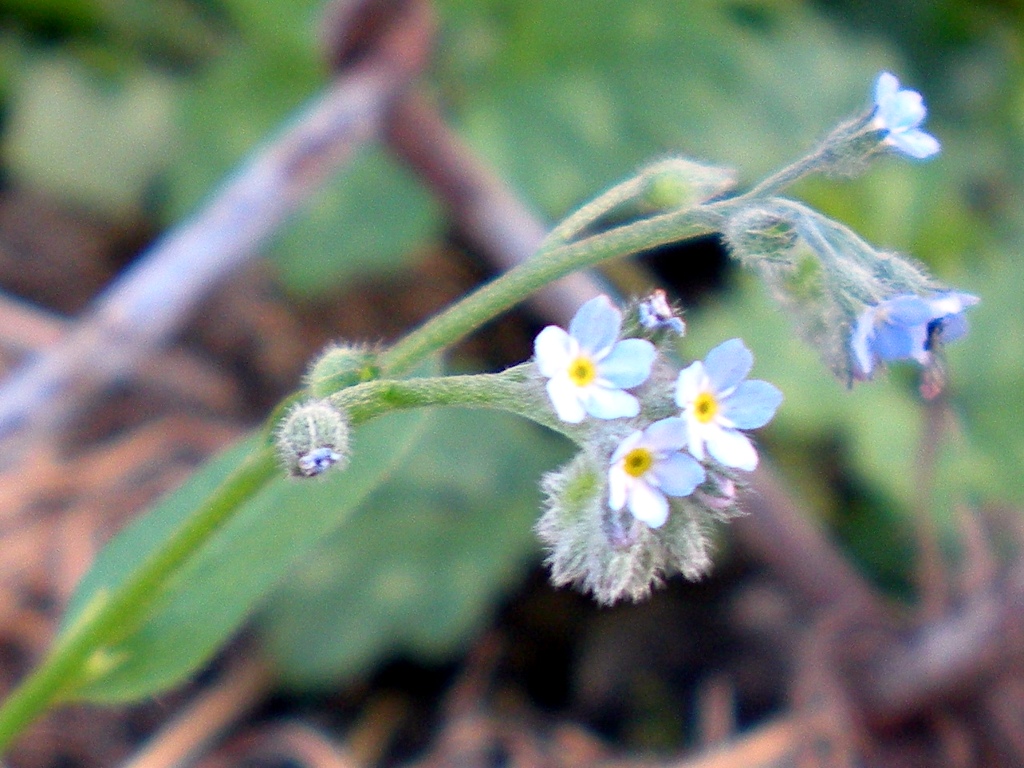 The name seems to suppose that a beggar cannot afford real lice, which is a strange little piece of folk wisdom. This is one of those hitchhiker plants that spread themselves by sticking to your clothes, or to animals’ fur. This particular patch was growing among taller flowers on a sunny bank in Mount Lebanon, where it was blooming in late July.
The name seems to suppose that a beggar cannot afford real lice, which is a strange little piece of folk wisdom. This is one of those hitchhiker plants that spread themselves by sticking to your clothes, or to animals’ fur. This particular patch was growing among taller flowers on a sunny bank in Mount Lebanon, where it was blooming in late July.
Flowers.—The flowers grow on indefinitely long stems, one flower blooming at a time, with a cluster of buds dangling beneath the open flower, and developing seedpods in a line down the stem. As they develop, the “nutlets” grow grasping hairs. Each flower has five small white petals, regular, almost round.
Stems.—Covered with soft hair; up to about 4 and a half feet tall (about 1.5 m); many branches, held almost horizontally, with the seedpods dangling like bells along the underside.
Leaves.—Covered with soft hair, alternate, sessile or nearly so, shaped like an ellipse with tapered points at both ends.
Gray includes Hackelia in the genus Lappula:
LAPPULA [Rivinius] Moench. STICKSEED.
Corolla salver-form, short, imbricated in the bud. Stamens included. Nutlets fixed to the base of the style or central column, triangular or compressed, the back armed with prickles which are barbed at the apex, otherwise naked. — Rough-hairy and grayish herbs, with small blue to whitish flowers in racemes or spikes; flowering all summer. (Name a diminutive of lappa, a bur.) ECHINOSPERMUM Sw.
* Slender pedicels recurved or deflexed in fruit; calyx-lobes short, at length reflexed; biennial or perennial, not hispid.
L. virginiàna (L.) Greene. (BEGGAR’S LICE.) Stem 3-12 dm. high; radical leaves round-ovate or cordate, slender-petioled; cauline 0.5-2.6 dm. long, ovate-oblong to oblong-lanceolate, acuminate at both ends; loosely paniculate racemes divaricate; pedicel and flower each about 2 mm. long; nutlets of the globose fruit equally short-glochidiate over the whole back. (Echinospermum virginicum Lehm.) — Woods, thickets, and waysides, Me. and w. Que., westw. and southw.





